Wow, you guys loved seeing pictures of our family vacation to Utah! Let me begin by saying the process of planning our family trips is a labor of love for me. More than that, I love planning a family vacation ADVENTURE. I put a lot of thought into our activities so there is a good balance between land and water excursions. I want everyday of vacation to be exciting. I’ve received many requests to share all the details of what we did, where we stayed, and, of course, what to wear — so here we go!

Why Utah? We were originally planning a summer trip to Greece but every time I tried to research the travel restrictions it made my head hurt. Things were changing too quickly and there was so much Covid uncertainty, we decided going abroad was not meant to be this year. We visited Zion and Bryce Canyon National Parks three years ago — it was one of our favorite family vacations. You can read more about our trip to Zion in this post. I had become fascinated with Arches National Park from the Utah license plate and there’s the lesser known Canyonlands National Park right next to it. It was as good a time as any to check them out. Before we left I purchased an America the Beautiful national parks pass. Look into the discount available for families with upper elementary-age kids.
:: Stay In Moab to Visit Arches and Canyonlands National Parks
The town of Moab sits in the valley between Arches and Canyonlands, an outdoor adventure hub for exploring the gorgeous landscape. We parked ourselves in Moab for three days to explore both parks. On our first day, we flew into Salt Lake City and drove 3.5 hours to Moab. If you have the time plan a stop at Little Sahara Sand Dunes, 2 hours south of Salt Lake City. I didn’t know it was there until after we arrived in Moab.
We stayed at the Hyatt Place in Moab. It’s a very clean, modern, and family and pet-friendly hotel. There are not many hotel options in Moab. The other option I would consider is glamping at Under Canvas. You can read more about our glamping experiences with them here. Since we’ve stayed at Under Canvas before we passed on it this time in favor of trying out another glamping outfit later in our vacation. We arrived at the hotel, settled in, stopped at the grocery store so we could prep lunches for our hikes, and grabbed a quick bite to eat for dinner. There are a lot of wonderful restaurants in Moab. We were there for the outdoor adventure so we didn’t bother with them. I have heard great things about Eklecticafe or Desert Bistro (make reservations in advance).
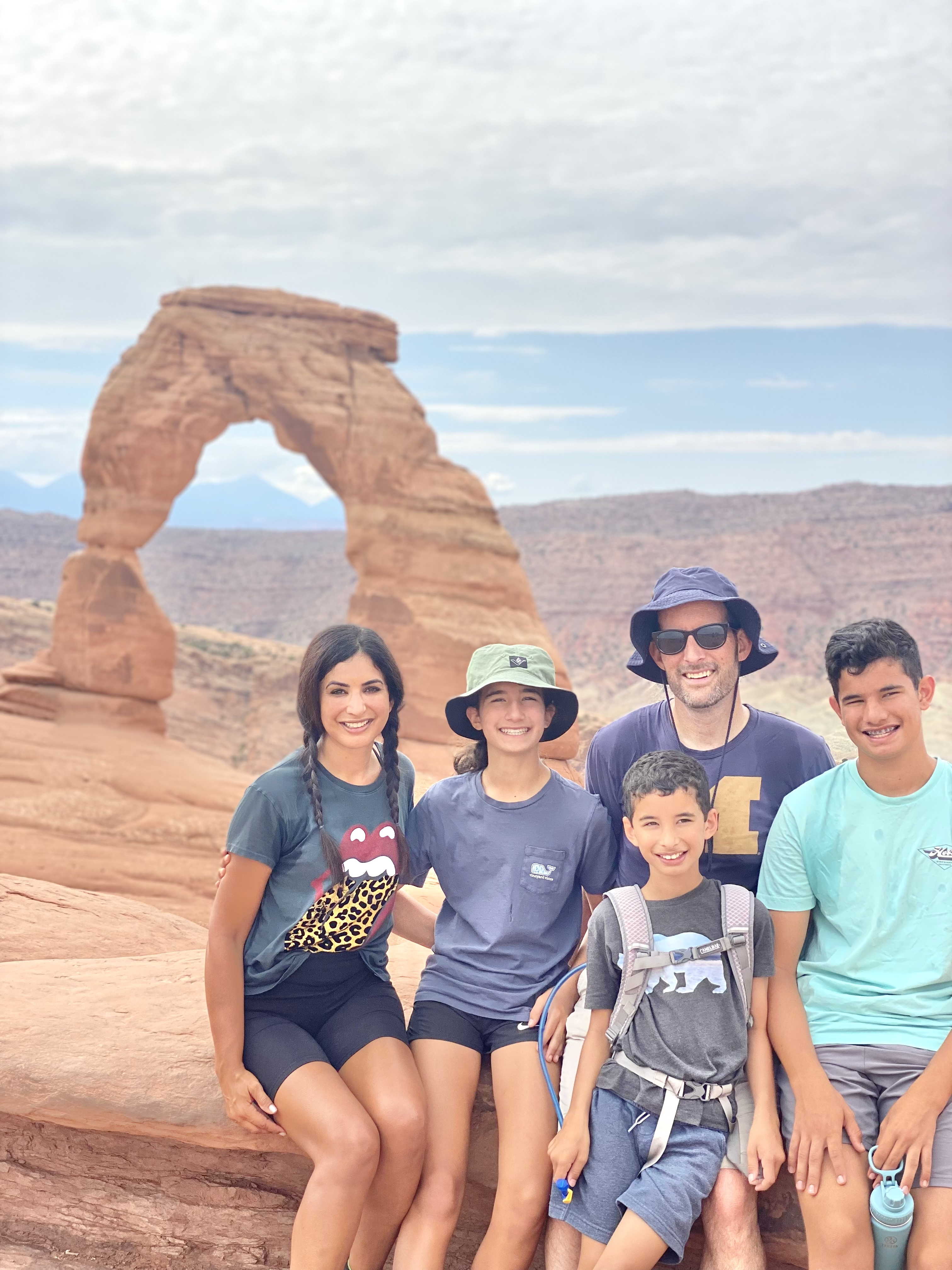
On our first full day of vacation we visited Arches National Park. Arches is not big — it’s totally reasonable to allocate one day to seeing the whole park. The arches and rock formations are impressive but more than one day would be overkill in my opinion. The most important thing to do in Arches is hike to Delicate Arch (the one you see on the Utah license plate). Of course, this is the most popular hike in the park and it’s extremely crowded — even if you go early. The trail is rated difficult; there are some steep sections that require rock scrambling. It’s a three mile loop so the hike isn’t long, but there’s no shade and with the sun beating down on you, it feels longer. We packed a lunch, brought water, sunscreen, and wore hats. We were fortunate the weather was overcast for first half of our hike. The arch is so impressive you’ll want to spend a bit of time enjoying the view. Plus, there will be a long line to get a picture beneath it so plan to spend a few hours on this hike.
After we returned from Delicate Arch we drove the scenic road in Arches to admire the magnificent sandstone rock formations. They really capture your imagination. We soon found ourselves creating our own names for the sights on the park map: Balanced Rock, Double Arch, Windows, and Park Avenue. We returned to our hotel, swam for a bit, then went back into the park in the late afternoon to hike to Double Arch.
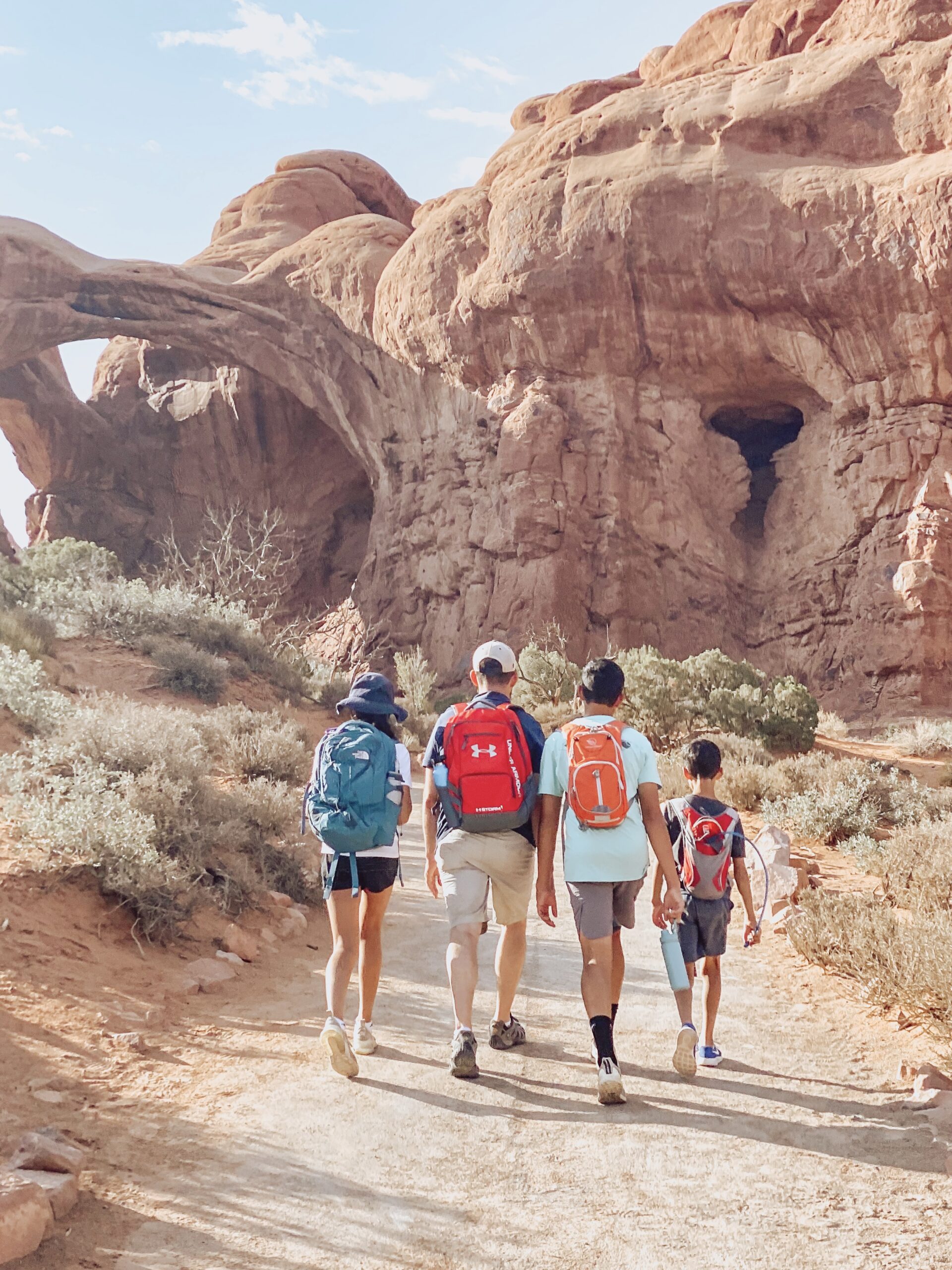
Overwhelmingly, the question I was asked most is about the weather in southern Utah in July. Coming from Washington, D.C. the heat was not a problem for us. I run and play tennis outside in 90 degree temps and ninety percent humidity so being in 100 plus desert temps in dry heat honestly wasn’t a huge deal. You know your capacity for heat tolerance, however, so base your decision on when to travel accordingly. To minimize our time in the hot sun we woke up early to do our hikes and spent the hottest hours of the day at the pool. We are not an early morning family but the time change was on our side. We always made sure to have plenty of water with electrolytes to avoid dehydration.
On our third day, we drove to Canyonlands National Park (affectionately referred to as “Candylands” by this family). There are actually three sections to Canyonlands but since we are on a highlight tour of the national parks we only stopped at the Islands in the Sky Section. It is the section closest to Moab. We hiked to Grand View Point. It’s an easy 1.8 mile roundtrip hike that wraps along the edge of a canyon. There’s a rock scramble at the end to get the best view of the grand canyon (not the Grand Canyon) below. Afterward we hiked a half mile to Mesa Arch which was probably my favorite hike in all of Candyland. We spent a half day at Islands in the Sky and that was enough for us.

On our way back to Moab we stopped at Dead Horse Point State Park. Because it’s a Utah state park your America the Beautiful pass will not work here: there’s a separate $20 admission fee. There’s a lookout over a gooseneck where the Colorado River has carved it’s way through the rock. If you aren’t planning to stop at Horseshoe Bend then definitely stop here.
:: Drive to Tsé Biiʼ Ndzisgaii (the Navajo name for Monument Valley)
The next day we packed up and made an early departure from Moab. The drive to Monument Valley from Moab is about 3.5 hours. My fascination with Monument Valley started with the Tom Hanks movie, Forrest Gump. It’s the place where he finally stops running after dealing with his breakup with Jenny. I heard from a girlfriend that it’s also a setting in the movie Cars. After driving miles and miles through a spectacular landscape of red rocks — and seeing not much else — you can’t miss Monument Valley. You will see lots of cars pulled off the road and tourists walking down the middle of the road to get a snap of themselves in this iconic spot.
 Monument Valley is located on tribal land. Navajo Nation was closed to visitors due to Covid until mid July 2021 — it was partially opened just two weeks before our visit– so we were lucky with our timing to be able to enter the park and see it all up close. Prior to our arrival in Utah I secured tickets to enter the Monument Valley Visitor Center. In hindsight, it probably wasn’t necessary. You get a closer view of the spectacular sandstone monuments from the visitor center and you can hire a driver to take you on the dirt road that weaves through the monuments; but our family simply appreciated the view from the main road. I briefly considered an overnight stay here and I was glad I opted to only allocate a few hours instead. If you don’t stay here it’s a long day in the car because you really are in the middle of nowhere but for our family a full day would have been too much. After spending a couple of hours at Monument Valley we jumped back in our car and drove another 3.5 hours to our next destination: Kanab, Utah.
Monument Valley is located on tribal land. Navajo Nation was closed to visitors due to Covid until mid July 2021 — it was partially opened just two weeks before our visit– so we were lucky with our timing to be able to enter the park and see it all up close. Prior to our arrival in Utah I secured tickets to enter the Monument Valley Visitor Center. In hindsight, it probably wasn’t necessary. You get a closer view of the spectacular sandstone monuments from the visitor center and you can hire a driver to take you on the dirt road that weaves through the monuments; but our family simply appreciated the view from the main road. I briefly considered an overnight stay here and I was glad I opted to only allocate a few hours instead. If you don’t stay here it’s a long day in the car because you really are in the middle of nowhere but for our family a full day would have been too much. After spending a couple of hours at Monument Valley we jumped back in our car and drove another 3.5 hours to our next destination: Kanab, Utah.
:: Go Glamping At BaseCamp 37 in Kanab, Utah
In Kanab we stayed at BaseCamp 37, a small woman-owned glamping outfit in southern Utah, centrally located near Zion, Bryce Canyon, and the north rim of the Grand Canyon National Parks. We disconnected from the world and reconnected with nature and eachother. And we did it without having to drag our camping gear across the country. You can read all about our experience here and see a quick video of our stay here. Kanab is a cute town called “Little Hollywood” by locals because many old western movies were filmed there. If you are tired from the long day of driving have dinner at Wild Thyme Cafe in Kanab — it was excellent. We picked up groceries in town and brought them back to BaseCamp 37. If glamping does not interest you Page, Arizona (about an hour east) is the next closest town.
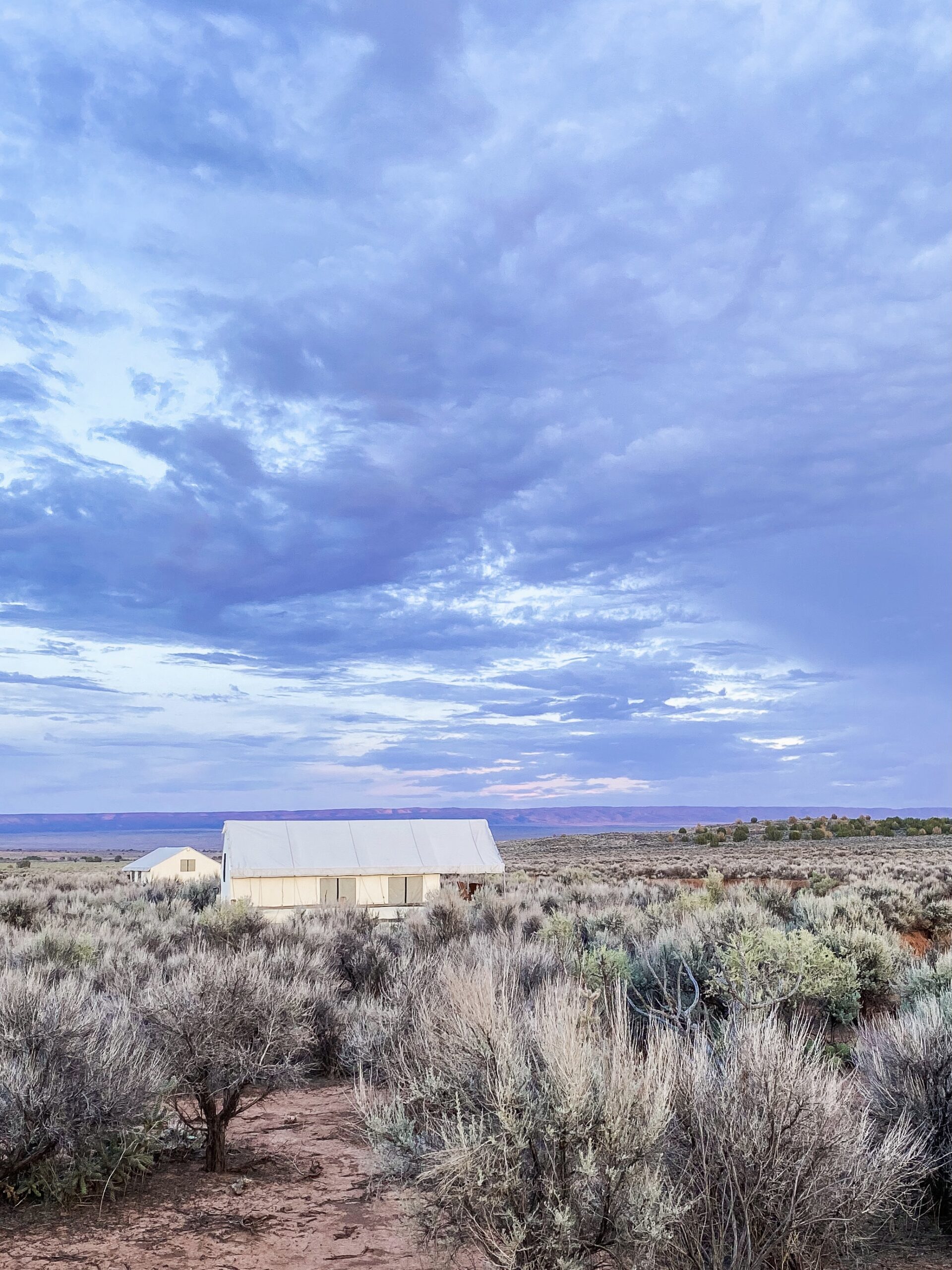
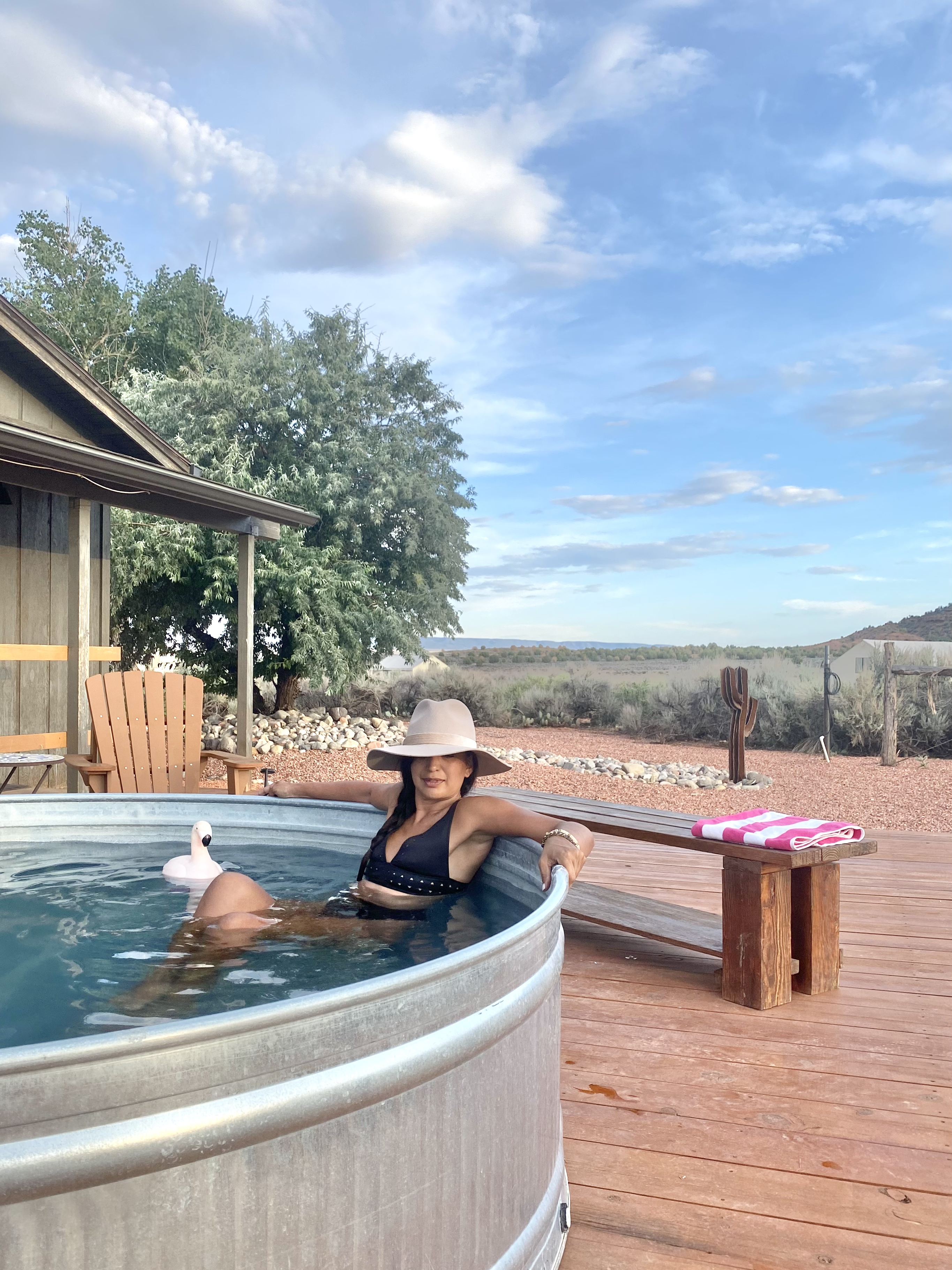
Basecamp 37 was our home base for exploring Horseshoe Bend, hiking Antelope Canyon, and taking in the beauty of Lake Powell. We visited the Grand Canyon on a previous trip so we skipped it this time. We unfortunately did not have enough time to explore the Grand Staircase-Escalante National Monument which is also close.
A note about the Grand Staircase-Escalante: it spans one million acres of BLM (Bureau of Land Management) land in Southern Utah. Like the Grand Canyon it is a massive geological treasure that could be a vacation of its own. One of the must-sees in the Grand Staircase-Escalante is a place called the Wave. You have to apply for a permit several months ahead of your visit. If you are lucky to get a permit, you can hire a guide to take you on the unmarked six mile hike to this photographic gem. Otherwise, you need a map, a compass, a true 4×4 high clearance vehicle, and a lot of hiking experience to get to where you want to be. This area was one of the last places in the U.S. to be mapped. It’s vast, rugged, and undeveloped. You are truly on your own to deal with nature.
While we stayed at BaseCamp 37 we kayaked the Colorado River through Horseshoe Bend, hiked Antelope Canyon, visited Coral Pink Sand Dunes state park, and boated on Lake Powell.
- Kayak Horseshoe Bend. We hired a backhaul company, Kayak Horseshoe Bend, to drop us off at Petroglyph Beach where you can see ancient Indian markings along the canyon walls. We kayaked 10 miles down the Colorado through Horseshoe Bend. The entire trip is roughly 4 hours (depending on how fast you kayak). The scenery is breathtaking and it is a spectacular way to enjoy the stunning beauty around you.
- Antelope Canyon. Like Monument Valley, Antelope Canyon is a sacred place within Navajo Nation. It was only partially open during our visit. Luckily it opened just before our arrival in Utah and I was able to secure a coveted reservation with Horseshoe Bend Tours to get access to the canyon. Our guide, Moses, is a Navajo Indian who knows the area like the back of his hand. We hiked through the desert a short way to gain access to the most picturesque slot canyon.
- Coral Pink Sand Dunes State Park. Coral Pink Sand Dunes is a state park in southern Utah that features sand dunes formed 10-15,000 years ago by wind erosion from nearby sandstone mountains. We heard about sand sledding and we couldn’t wait to experience it. Unfortunately the weather did not cooperate during our visit but the kids managed to get few runs down the dune before a rain/wind storm drove us out. You can rent sleds and boards at the park. Adventure companies in the area also offer ATV excursions. Be prepared to get sand in places you didn’t know was possible.
- Lake Powell. Lake Powell is a man-made reservoir on the Colorado River in Utah and Arizona. It has 2,000 miles of coastline, more than the entire Pacific Coast. We treated ourselves with a pontoon boat rental from Antelope Point Marina (you could also try to rent from Waheap Marina). The kids went tubing and we all swam and simply enjoyed the beauty of Lake Powell. Many people rent houseboats and spend five days exploring the canyons surrounding the lake.
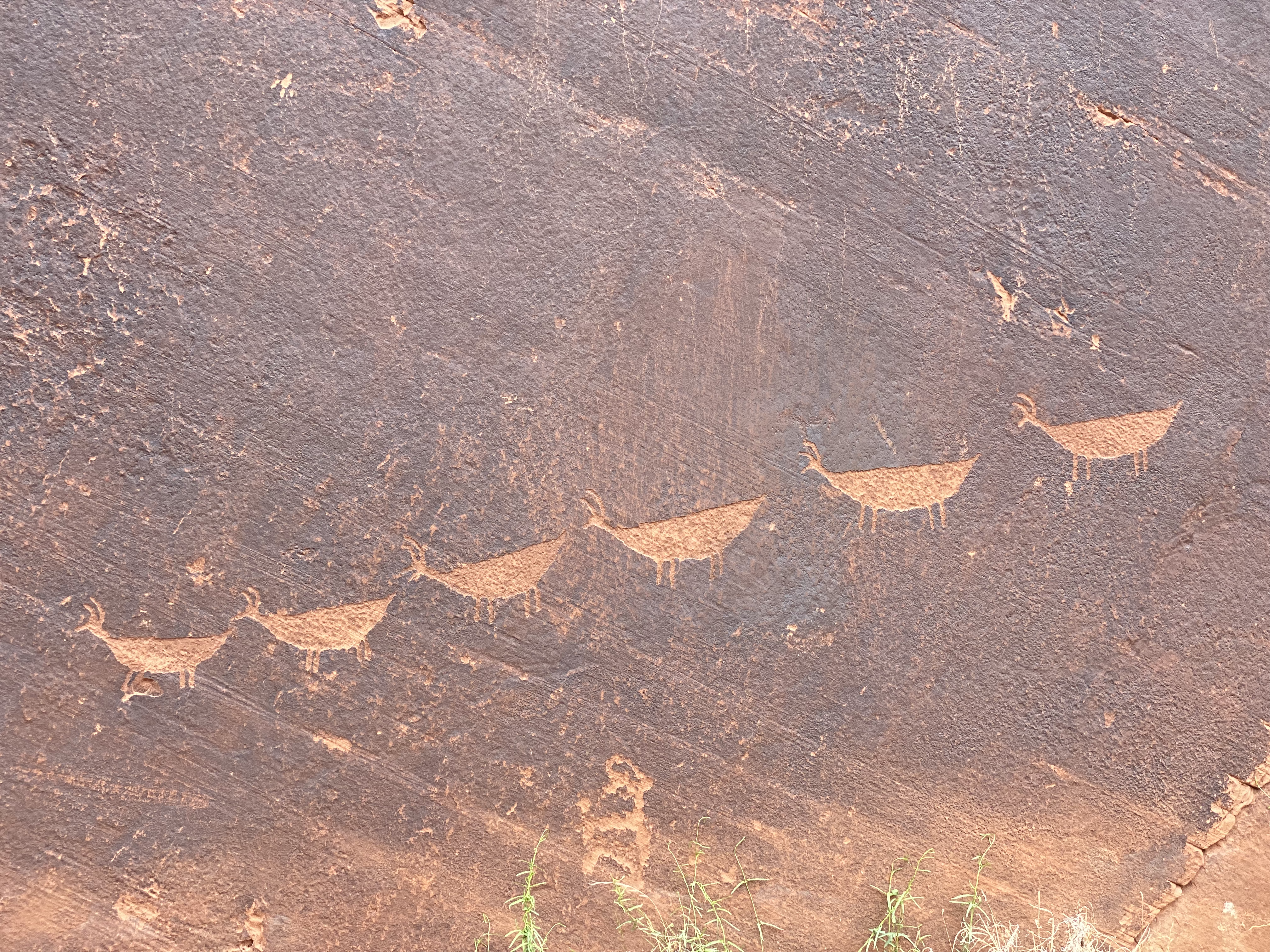
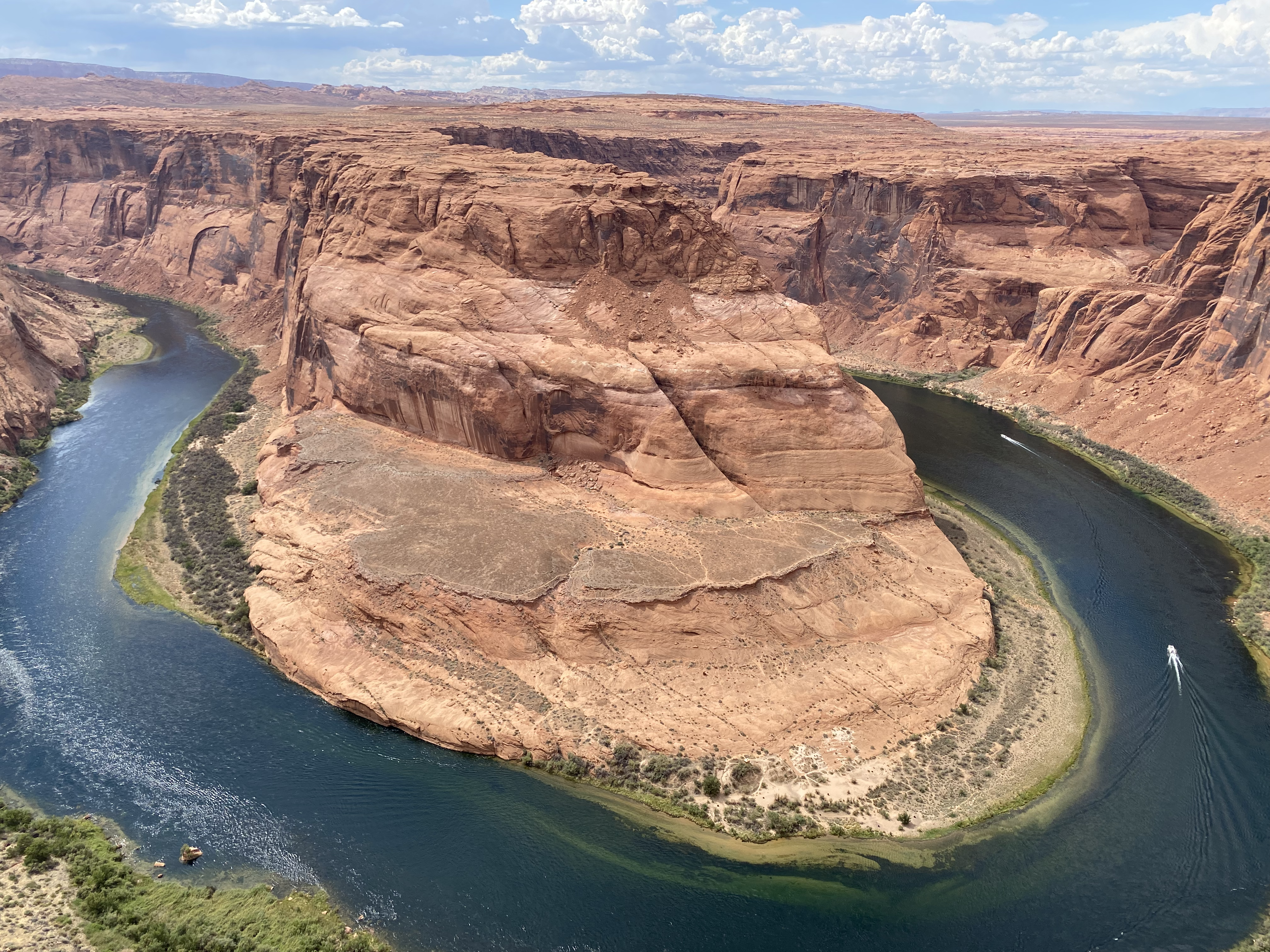
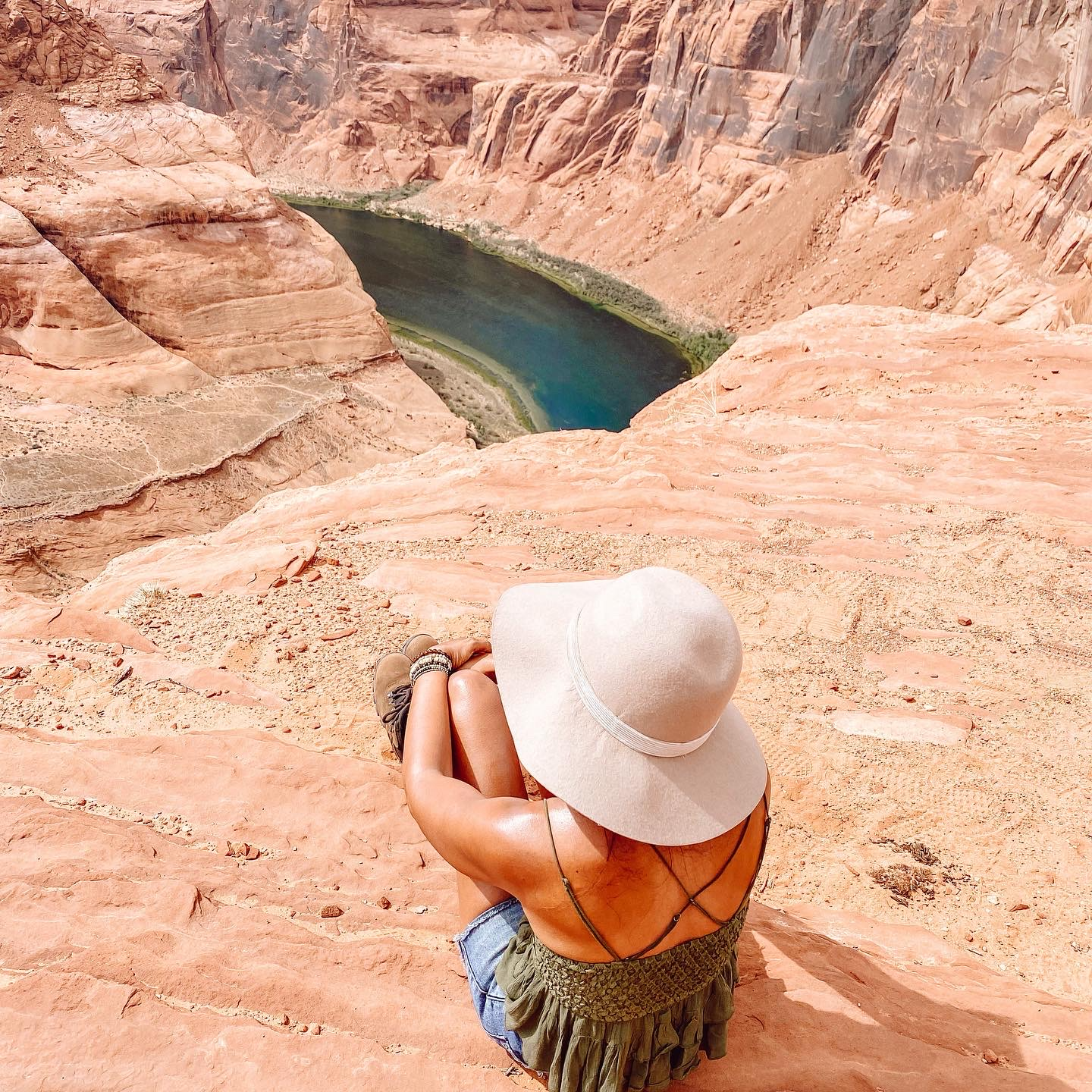
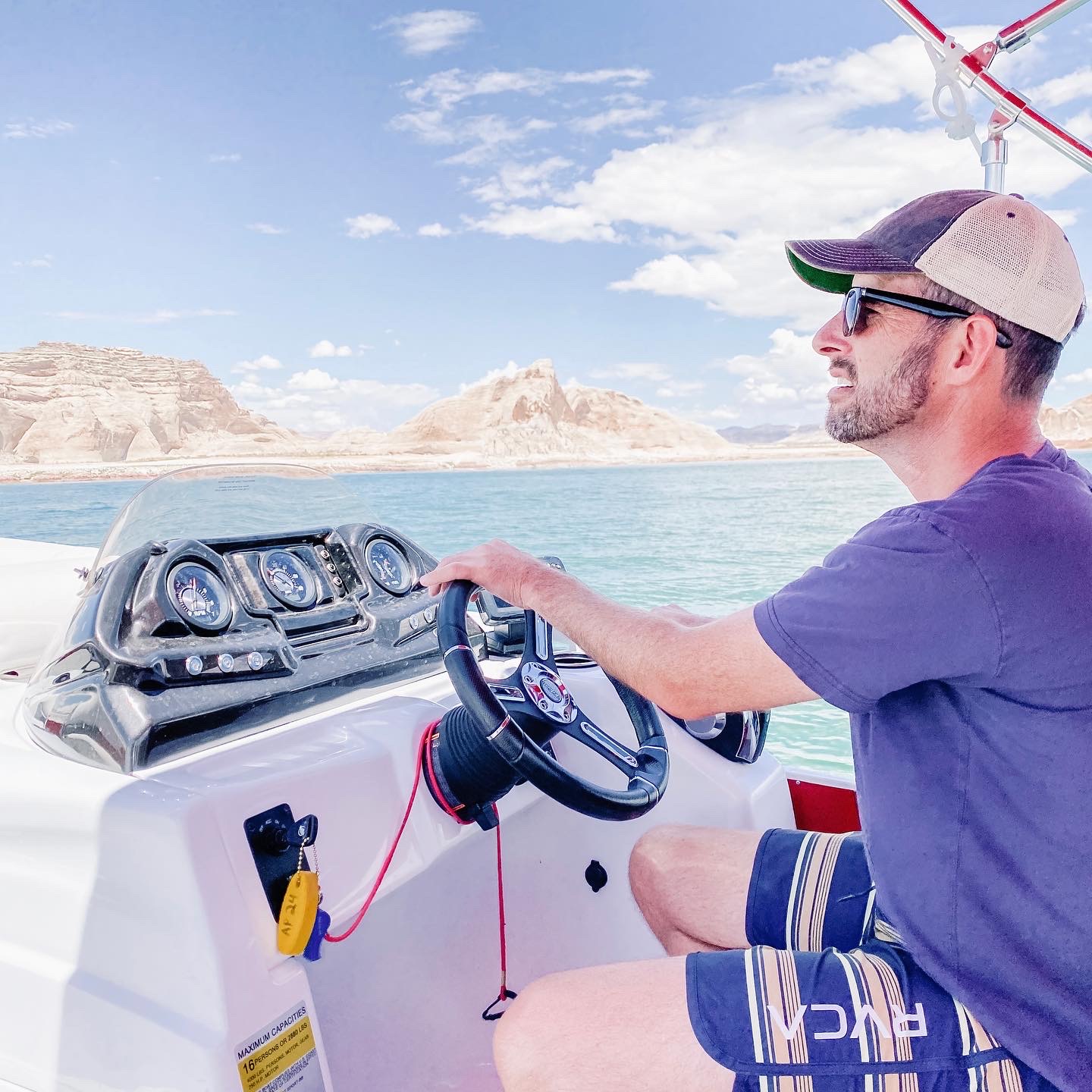
:: Drive to Phoenix, Arizona By Way Of Sedona
To catch our flight home we drove ~ 3 hours to Sedona, Arizona. We spent two days in Sedona before heading to Phoenix to catch a flight home. Alternatively we could have driven to Saint George, Utah or even Las Vegas (stop at the Hoover Dam if you do this) to fly home.
Leave a comment below with any questions about our vacation!
What to Wear
If you like this post please subscribe to receive regular email updates. Did you know that now you can follow a hashtag on Instagram? Follow #lunchwithagirlfriend. For more inspiration, you can also follow me on Facebook and Pinterest .


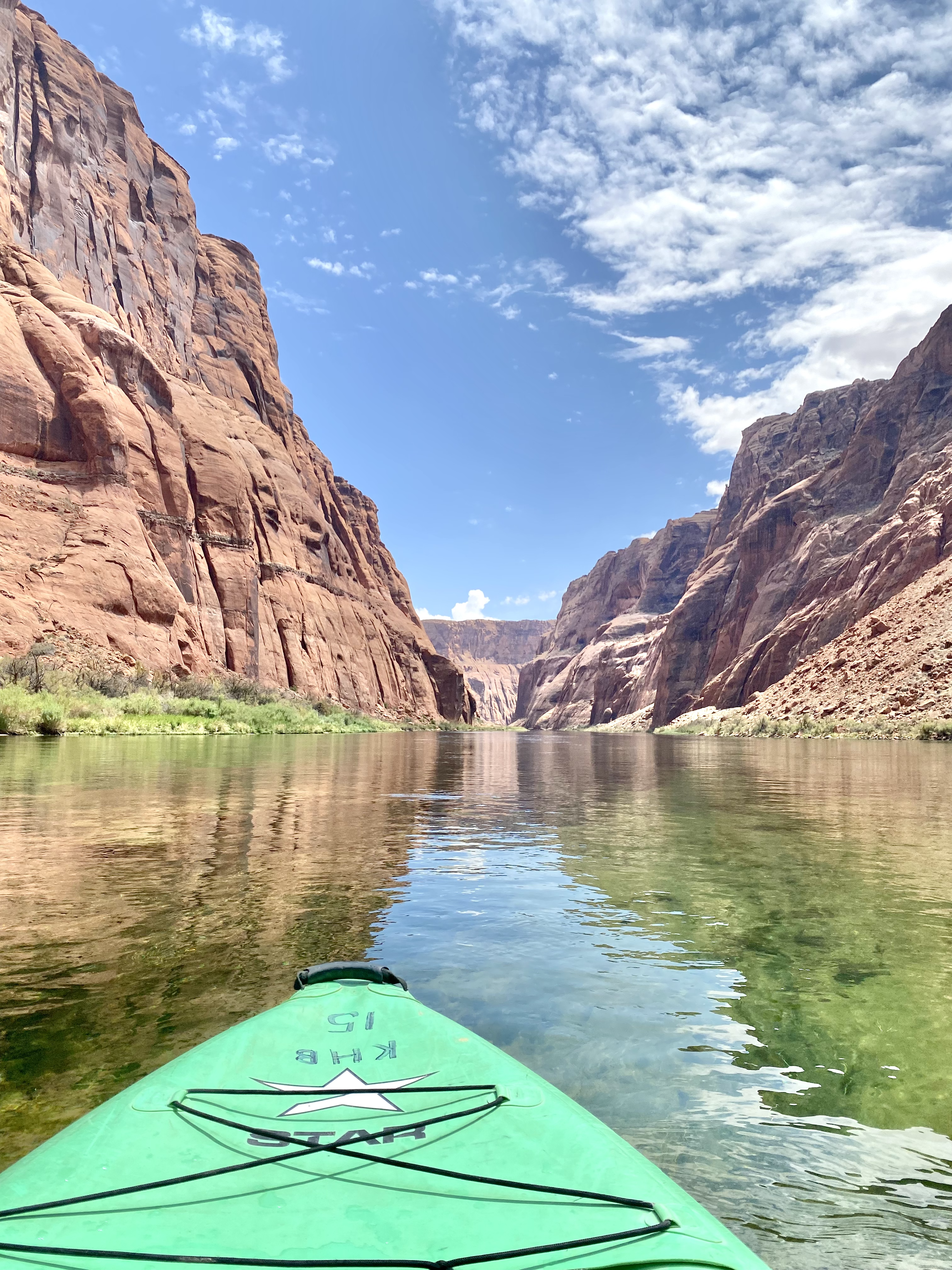
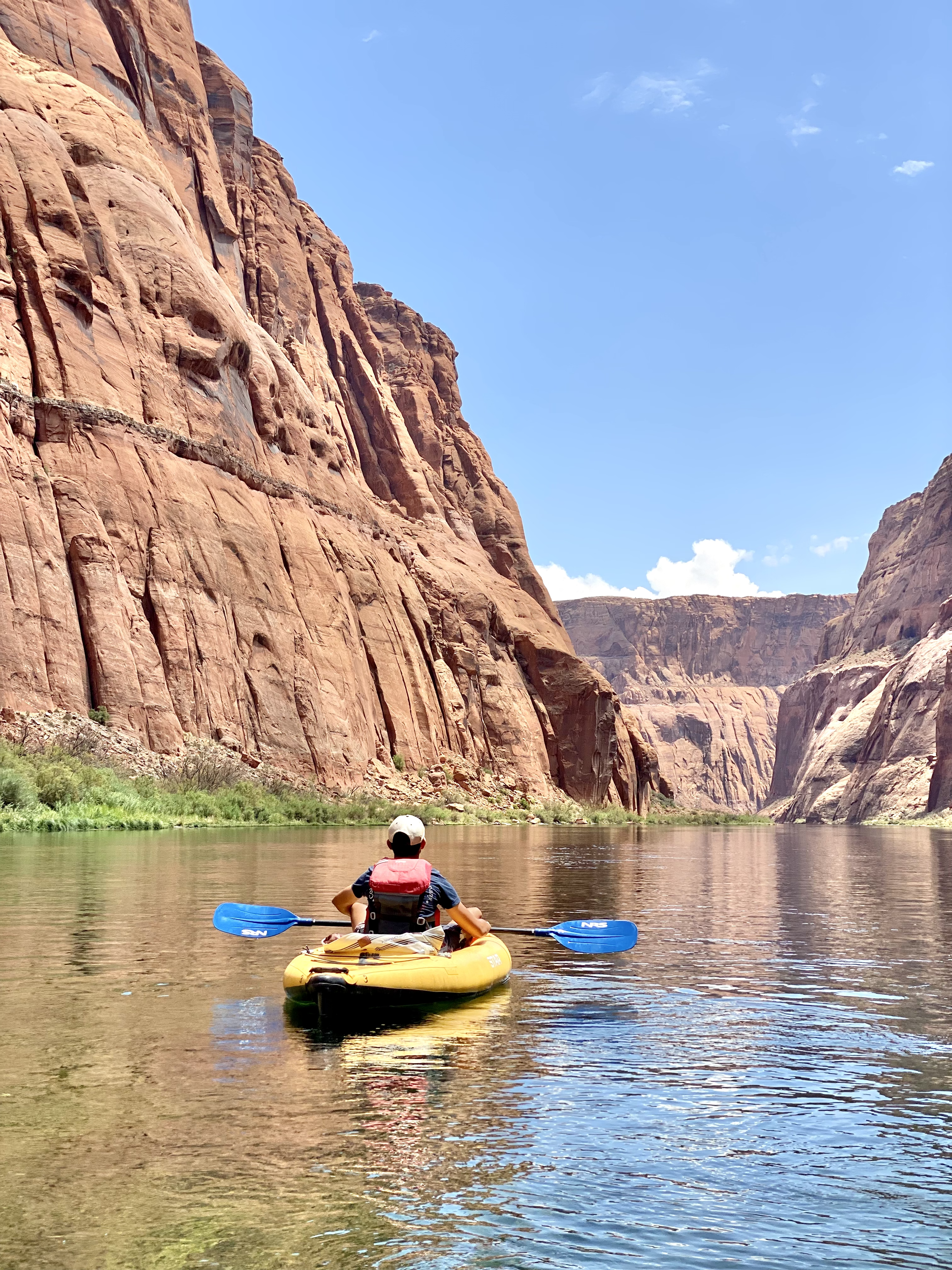
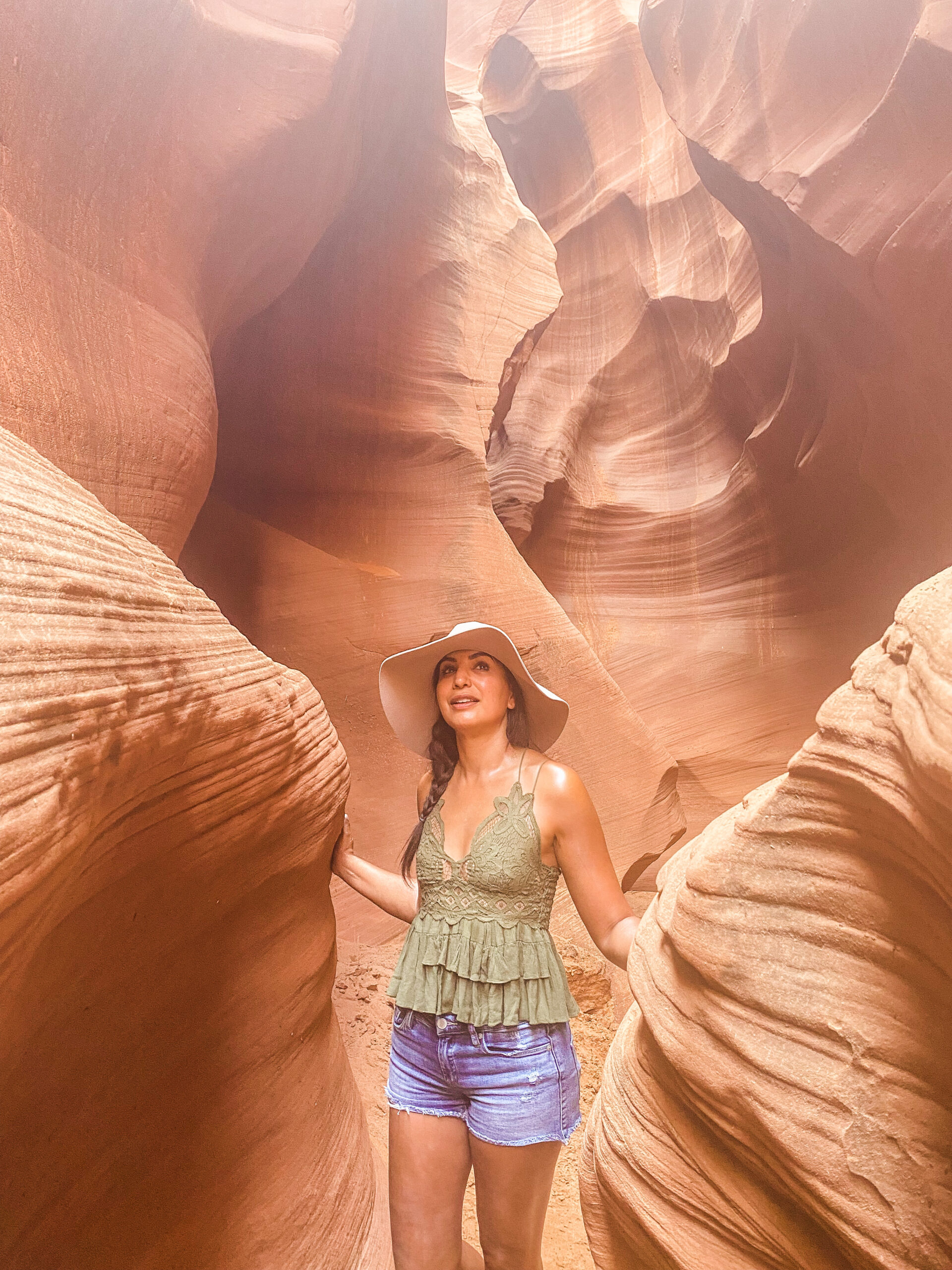
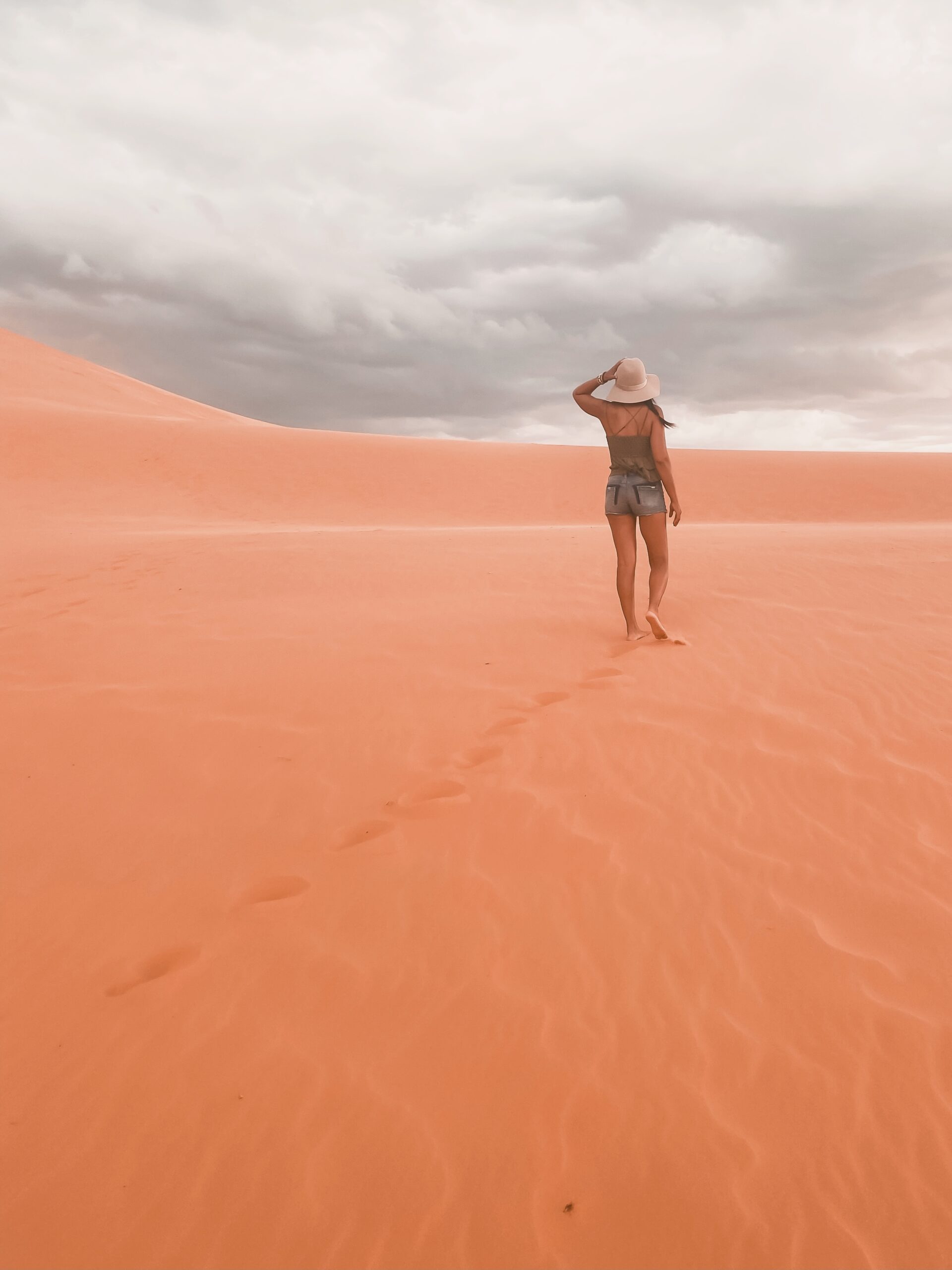
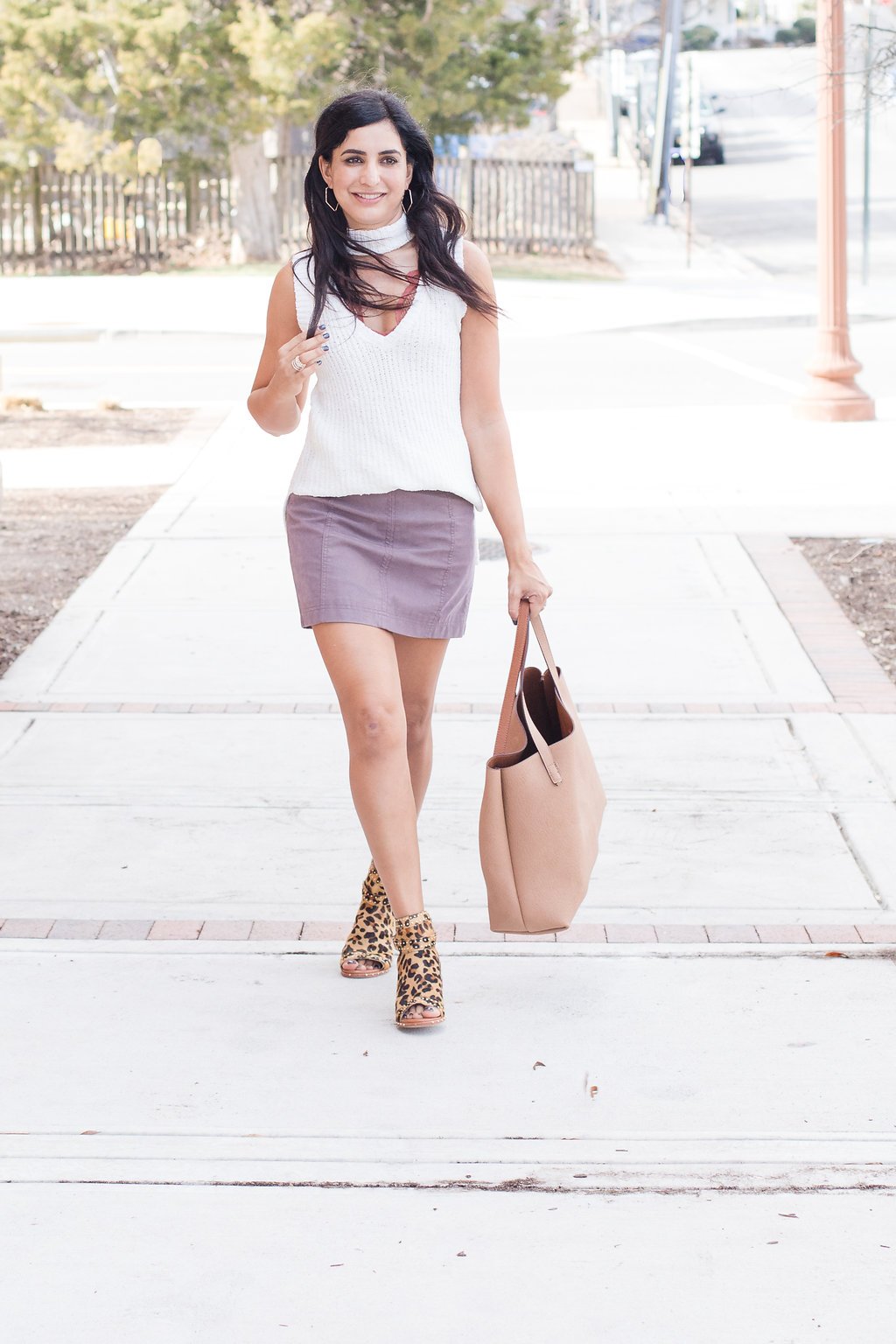
Wow! What an amazing trip! Like, like ,like. Thx for all the tips, I will def look into this.
Glad you enjoyed reading the guide!